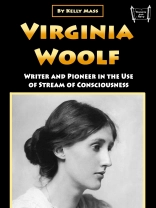Adeline Virginia Woolf, an esteemed English writer, stands as a luminary among the influential modernist authors of the twentieth century, recognized as a trailblazer in employing the stream of consciousness as a literary device.
Woolf’s origins trace back to an affluent South Kensington family, where she emerged as the seventh child in a blended family of eight, nurtured by Julia Prinsep Jackson and Leslie Stephen. Noteworthy within this family circle was Vanessa Bell, a prominent modernist painter. Raised in an intellectually stimulating environment, Woolf received her early education in English classics and Victorian literature through homeschooling. Her academic journey led her to the Ladies’ Department of King’s College London from 1897 to 1901, an experience that brought her into contact with early advocates of women’s higher education and the burgeoning women’s rights movement.
The dawn of Woolf’s professional writing career occurred in 1900, spurred by the encouragement of her father. The Stephen family underwent a significant shift after Leslie Stephen’s demise in 1904, relocating from Kensington to Bloomsbury. In Bloomsbury, Woolf and her siblings cultivated the Bloomsbury Group, a vibrant intellectual and artistic collective that included the brothers’ diverse intellectual associates.
The year 1912 marked Woolf’s union with Leonard Woolf, leading to the establishment of the Hogarth Press in 1917—a venture that played a pivotal role in publishing a substantial body of her literary works. Seeking a permanent abode, the Woolfs settled in Sussex in 1940, where they rented a house. Woolf’s personal and creative life intertwined with Vita Sackville-West, a fellow writer who published novels through the Hogarth Press. This romantic connection endured until Woolf’s passing, profoundly influencing the creative trajectories of both women.
Kelly Mass
Virginia Woolf [EPUB ebook]
Writer and Pioneer in the Use of Stream of Consciousness
Virginia Woolf [EPUB ebook]
Writer and Pioneer in the Use of Stream of Consciousness
Kup ten ebook, a 1 kolejny otrzymasz GRATIS!
Język Angielski ● Format EPUB ● ISBN 9791222495903 ● Rozmiar pliku 0.5 MB ● Wydawca Efalon Acies ● Opublikowany 2024 ● Do pobrania 24 miesięcy ● Waluta EUR ● ID 9308322 ● Ochrona przed kopiowaniem bez












